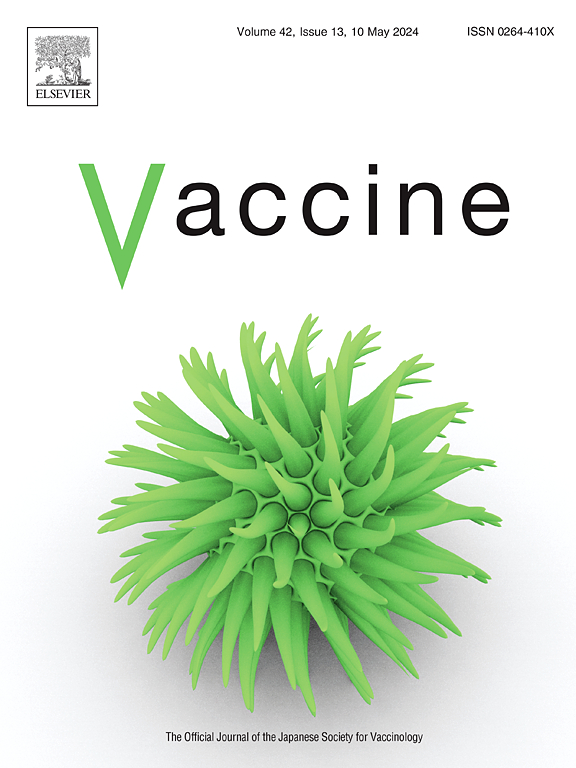Serotype specific pneumococcal vaccine effectiveness in children with sickle cell disease: A two-decade analysis
IF 4.5
3区 医学
Q2 IMMUNOLOGY
引用次数: 0
Abstract
Objectives
Sickle cell disease (SCD) is the most common genetic hematologic disease globally and children with SCD are at increased risk for pneumococcal disease.
Methods
We utilized data from population-based enhanced surveillance for invasive pneumococcal disease (IPD) in children <18 years of age in Massachusetts from 2002 to 2020. We calculated incidence rates (IR) among children with SCD using bootstrapping resampling and incidence rate ratios (IRR) for pre- and post-PCV13 periods. Vaccine effectiveness (VE) was calculated as 100*(1-IRR), and PCV13 vaccine failure probability was predicted using a random forest model.
Results
Children with SCD had higher IR during both pre−/post-PCV13 periods compared with otherwise healthy children 240.0/100,000 versus 4.6/100,000 in pre-PCV13 period (2002–2009); 172.7/100,000 versus 1.9/100,000 in post-PCV13 period (2011−2020), respectively. After widespread use of PCV7 for a decade, a modest reduction of 28.1 % (95% CI 25.9–37.2%) in the incidence of overall IPD during the post-PCV13 period was observed in children with SCD, whereas a more substantial 59.5% (96% CI 57.8–61.4%) reduction was observed in otherwise healthy children. There was a 60.8% (95% CI 55.2%-NA) reduction in the incidence of VST13 IPD in children with SCD and an 83.0% (95% CI 80.67–85.63%) reduction in children without underlying health condition. Overall, 61.1% of the remaining IPD among children with SCD were due to non-PCV13 serotypes (8, 10A, 15A,15B, 22F, 23B), many of which are included in expanded valency vaccines.
Conclusion
Children with SCD continue to have higher rates of IPD compared with otherwise healthy children despite vaccination. Majority of the remaining disease is due to serotypes not included in vaccine formulations that have been used for the last two decades. Our study highlights the potential value of expanded valency vaccines and importance of risk-based vaccination strategies tailored for this vulnerable population.
血清型特异性肺炎球菌疫苗对镰状细胞病儿童的有效性:二十年分析
目的:镰状细胞病(SCD)是全球最常见的遗传性血液病,患有SCD的儿童患肺炎球菌病的风险增加。方法:我们利用2002年至2020年马萨诸塞州18岁儿童侵袭性肺炎球菌病(IPD)基于人群的强化监测数据。我们使用bootstrapping重采样和pcv13前后的发病率比(IRR)计算SCD儿童的发病率(IR)。计算疫苗有效性(VE)为100*(1-IRR),采用随机森林模型预测PCV13疫苗失效概率。结果SCD患儿在pcv13前后的IR均高于其他健康儿童(240.0/10万),而pcv13前(2002-2009)为4.6/10万;在pcv13后时期(2011 - 2020),分别为172.7/100,000和1.9/100,000。在广泛使用PCV7 10年后,SCD患儿在pcv13后的时间内,总体IPD发生率适度降低28.1% (95% CI 25.9-37.2%),而在其他健康儿童中,则观察到更显著的59.5% (96% CI 57.8-61.4%)的降低。SCD患儿VST13 IPD发生率降低60.8% (95% CI 55.2%-NA),无基础健康状况患儿VST13 IPD发生率降低83.0% (95% CI 80.67-85.63%)。总体而言,SCD儿童中剩余IPD的61.1%是由非pcv13血清型(8,10a, 15A,15B, 22F, 23B)引起的,其中许多包括在扩大价疫苗中。结论SCD患儿在接种疫苗后仍有较高的IPD发生率。剩余的大多数疾病是由于过去二十年中使用的疫苗制剂中未包括的血清型所致。我们的研究强调了扩大价疫苗的潜在价值,以及为这一弱势群体量身定制的基于风险的疫苗接种策略的重要性。
本文章由计算机程序翻译,如有差异,请以英文原文为准。
求助全文
约1分钟内获得全文
求助全文
来源期刊

Vaccine
医学-免疫学
CiteScore
8.70
自引率
5.50%
发文量
992
审稿时长
131 days
期刊介绍:
Vaccine is unique in publishing the highest quality science across all disciplines relevant to the field of vaccinology - all original article submissions across basic and clinical research, vaccine manufacturing, history, public policy, behavioral science and ethics, social sciences, safety, and many other related areas are welcomed. The submission categories as given in the Guide for Authors indicate where we receive the most papers. Papers outside these major areas are also welcome and authors are encouraged to contact us with specific questions.
 求助内容:
求助内容: 应助结果提醒方式:
应助结果提醒方式:


